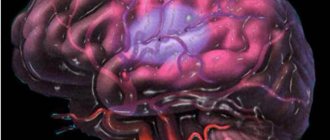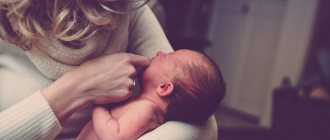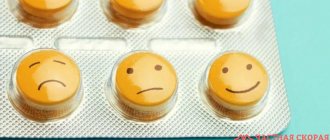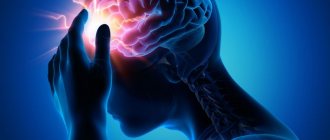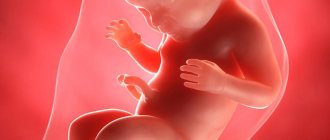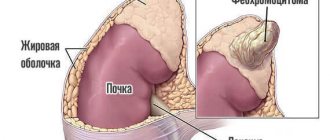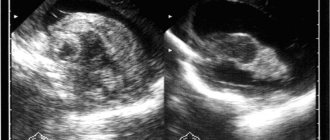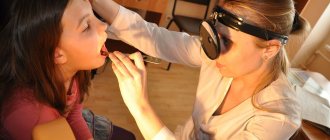Pediatrician (working with children of the first year of life)
Murzina
Oksana Yurievna
21 years of experience
Pediatrician of the highest category, member of the Union of Pediatricians of Russia
Make an appointment
Jaundice in newborns (most often physiological) is a condition in which the skin and whites of the eyes turn yellow due to high levels of a substance called bilirubin in the blood. Most babies develop 2-3 days after birth. Bilirubin is a yellow substance resulting from the destruction of hemoglobin during the natural replacement of red blood cells. Under normal conditions, it should be processed quickly in the liver. According to medical statistics, jaundice is diagnosed in 50-60% of cases in newborns born at term, and in 80% of premature infants. Bilirubin in excess amounts has a toxic effect on internal organs.
Causes of the disease in infants
Jaundice in newborns can have the following causes:
- increased breakdown of hemoglobin due to Rh conflict;
- blood type conflict between mother and baby;
- maternal and infant infections;
- birth injuries;
- hypothyroidism (decreased thyroid function);
- polycythemia (increased number of red blood cells);
- reaction to breast milk;
- congenital hepatitis;
- pyloric stenosis (congenital pathology of the stomach).
An external “enemy” destroys liver cells
The disease is caused by infections: hepatitis B, C or D viruses, cytomegalovirus, bacteria or protozoa.
The already immature liver poorly produces the protein that binds bilirubin + the removal of pigment from the body is impaired.
The illnesses are severe and with severe intoxication. Accumulated bilirubin turns the skin greenish-yellow, stools become colorless, and urine darkens. The list and spleen are enlarged.
Treatment is complex, targeting the pathogen.
What are the symptoms in babies?
Symptoms may range from mild to severe. This depends on the level of bilirubin in the blood and the duration of the disease. The causes and consequences of jaundice in newborns can vary, but there is one common characteristic - jaundice of the skin and sclera. It is worth noting that the eyes show symptoms faster. The baby may experience increased drowsiness with a decreased sucking reflex. Convulsions may occur. Without treatment, advanced jaundice can cause deafness, mental retardation and paralysis.
Does your newborn have symptoms of jaundice?
Only a doctor can accurately diagnose the disease. Don't delay your consultation - call
When should you contact a pediatrician for newborn jaundice?
If jaundice in a newborn lasts longer than usual, you should contact your pediatrician as soon as possible, since indirect bilirubin in high concentrations has a toxic effect on the child’s brain cells and causes so-called bilirubin encephalopathy.
Bilirubin encephalopathy is manifested by the child's lethargy, apathy, the baby begins to suck worse, burps more, and his gaze becomes “wandering.”
If treatment is not started in time, damage to the nervous system can lead to irreversible consequences such as cerebral palsy, paralysis, paresis, deafness, mental retardation, etc. For severe hyperbilirubinemia, treatment is a total blood transfusion.
Main and rare types of disease
Increased bilirubin in infants is considered normal, but only in the first few days. Gradually the figures are decreasing. If this does not happen, we are talking about the development of a pathological process.
Types of jaundice in newborns (depending on the reasons for its occurrence and severity):
- physiological;
- hemolytic;
- conjugative;
- neonatal;
- nuclear;
- parenchymal;
- obstructive;
- pathological4
- mechanical.
Classification of newborn jaundice allows you to accurately diagnose and determine the direction of treatment. In uncomplicated cases, health is good. Physiological jaundice occurs in 60-70% of infants. It is also called temporary conjugation. Appears on days 3-4 (in premature infants on days 5-6) after birth without signs of anemia and hemolysis. It goes away within 7-14 days.
Conjugation jaundice develops due to the immaturity of any component of the bilirubin metabolic system. Occurs from 2 to 10 days after birth. The disease lasts from 14 to 30 days. Differential diagnosis is difficult, and symptoms may be similar to other types of jaundice. Inpatient monitoring of the young mother and baby is recommended.
Hemolytic jaundice in newborns occurs due to a history of other diseases. These may be: pulmonary infarction, liver damage, septic endocarditis, malignant tumors, malaria. Toxic effects on the body can also cause the development of this form of the disease. Diagnostics shows an increased level of stercobilin in feces and the presence of hyperbilirubinemia.
Neonatal jaundice of newborns is provoked by immaturity of liver cells, increased production of bilirubin and low ability of blood serum to bind it. If a decreasing trend in indicators is not observed, diagnostics are necessary to determine the causes. Neonatal jaundice is characterized by insufficient amounts of enzymes that are needed to neutralize excess bilirubin in the blood.
A severe form of the disease is considered to be kernicterus, which affects the brain, which is not bound by bilirubin. Symptoms develop rapidly during the first two days after birth. The baby has a mask-like facial expression, convulsions, tension in the muscles of the neck and head, and wheezing when listening. This type of jaundice in newborns has serious health consequences.
Parenchymal type is a severe form of the disease that requires immediate medical attention. It is of hepatitis origin. Obstructive jaundice is a pathological syndrome, the cause of which may be disturbances in the metabolism of metals, proteins, anatomical defects and obstruction of the bile ducts. It appears from the first days of life. Recovery is possible by the second half of the year, provided the form of the disease is uncomplicated.
The obstructive (subhepatic) form of the disease develops against the background of bile duct obstruction. There may be a history of abdominal tumors. In infants, the skin color has a greenish-yellow tint, stool is whitish, and urine is dark. Pathological jaundice in the neonatal period develops rapidly - in the first days after birth. An enlargement of the spleen and liver, and the occurrence of spontaneous bruises on the body are diagnosed. Increased hemolysis may occur if there is a history of Rh factor incompatibility between mother and baby.
Why is jaundice dangerous?
When the level of bilirubin increases for a long time and/or to high numbers, kernicterus - a serious complication of any jaundice in newborns.
The pigment is toxic and “loves” nervous tissue: excess bilirubin penetrates into the nuclei of cells in the gray matter of the brain, leading to their death. The children's condition is serious and they require intensive treatment.
Negative effects of pigment on a child : can lead to neurological disorders, impaired speech development, retardation in physical or mental development, blindness or deafness.
Risk group : premature babies and/or children who have suffered an intrauterine infection, hypoxia or asphyxia during childbirth. In these conditions, the nerve cells are initially already damaged, which makes it easier for the toxic pigment to penetrate them.
Depending on the type of “breakdown” in bilirubin metabolism, different types of jaundice develop.
Indications for phototherapy
Indirect hyperbilirubinemia of newborns (including immaturity of liver enzymes, conjugative hyperbilirubinemia, hemolytic disease of newborns, Rh conflicts).
Contraindications for phototherapy:
- presence of a diagnosis of “Porphyria” in the family history or in the child
- with a significant increase in the concentration of direct bilirubin
- use of photosensitizing medications.
Recommended phototherapy regimen:
In recent years, continuous and intermittent phototherapy regimens have been proven to be equally effective, with:
- the maximum break between phototherapy sessions is no more than 2–4 hours;
- phototherapy sessions should be repeated regularly;
- the optimal phototherapy regimen for most newborns with conjugative hyperbilirubinemia is sequential alternation of phototherapy sessions with breaks for feeding;
How to do phototherapy at home correctly
The use of a UV lamp for the treatment of jaundice in a newborn is prescribed by a pediatrician. You should not self-medicate and make prescriptions yourself. You can rent a UV lamp and use it yourself; the physiotherapist or pediatrician who prescribed the treatment will explain to you in detail how to use the lamp, outline the number and duration of sessions, and tell you safety measures.
Practical recommendations for phototherapy:
- Phototherapy is carried out only with a special medical lamp for newborns!
- Any other lamps (for example, for photography, or for tanning, solarium lamps) can not only harm a child, they can be deadly for him.
- the room temperature must be at least 26 degrees.
- The child's genitals must be protected; to do this, simply put a diaper on the baby.
- Every 2 hours it is necessary to measure the child’s body temperature
- the daily volume of fluid that the child receives must be increased by 10–20%
- phototherapy can be discontinued if there are no signs of a pathological increase in bilirubin, and the concentration of total bilirubin in the blood serum has become below the values that served as the basis for starting phototherapy;
- 12 hours after the end of phototherapy, a control test of blood bilirubin is necessary
IMPORTANT TO KNOW: the photo lamp of our medical center has a special “pocket” where the mother places the newborn. In this case, the child’s body is irradiated, and the head and face are located outside, outside the irradiated surface. Our lamp is very easy to use, no special knowledge or skills are needed, just put on the baby's diaper (so that the genitals are not exposed to radiation), put the baby in the pocket, and carefully fasten the zipper.
Irradiation of the body by ultraviolet rays with light from the blue spectrum leads to photoisomerization (decomposition) of large molecules of bilirubin, converting it into water-soluble products that are easily and quickly excreted by the kidneys with urine or the liver into bile through the gastrointestinal tract.
Treatment of jaundice in newborns at home
The main treatment method for indirect hyperbilirubinemia (newborn jaundice) is phototherapy (phototherapy) - treatment with light from the blue spectrum of radiation. At the same time, under the influence of blue light, bilirubin is destroyed and eliminated naturally from the baby’s body.
For phototherapy of newborns, only special blue light lamps (photoirradiators) are used. Treatment takes several days, the duration of therapy is determined by a pediatrician. Photoisomerization of bilirubin occurs in the child’s skin, therefore, the larger the body area used for phototherapy, the more effective the treatment process. The lamp for the treatment of jaundice in newborns is a bath made of harmless plastic, in the base of which blue light lamps are mounted. During the procedure, the baby is placed in a removable hammock.
The total session lasts at least 14 hours, treatment must take place in the presence and under the supervision of parents. The child should not be left alone in the device without supervision.
What to do if your baby has neonatal jaundice?
- Consult with a pediatrician at one of our medical centers, or call a pediatrician at your child's home.
- If there are indications for phototherapy, the pediatrician will tell you what kind of lamp is needed for treatment, what course of phototherapy is needed, and how to conduct phototherapy sessions at home.
- At any children's medical center you can rent a lamp for phototherapy of newborn jaundice for the required period
- After finishing therapy, be sure to show your child to the pediatrician again. A repeated consultation with the pediatrician is necessary to make sure that the treatment was successful and the child is healthy.
